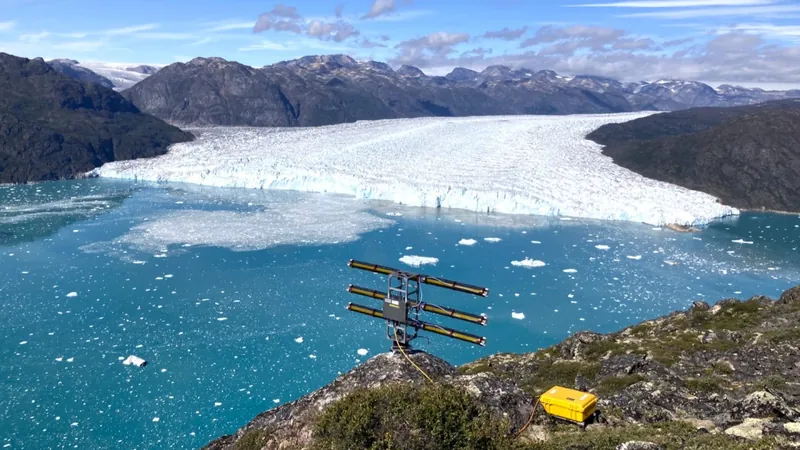
Revolutionary Fibre Optics Unveil Hidden Forces Melting Greenland's Ice Sheet
2025-08-20
Author: Noah
The Invisibility of Melting Ice Revealed
For the first time ever, researchers have harnessed cutting-edge fibre-optic technology to uncover the invisible forces accelerating the melting of Greenland's ice sheet. This groundbreaking study, led by researchers from the universities of Zurich and Washington, shines a light on the critical impacts of ice calving from glaciers.
Speeding Up Melting: The Impact of Ice Calving
Since 2002, Greenland's ice sheet has alarmingly shed an average of 270 billion tonnes of ice each year, contributing nearly two centimeters to rising sea levels. The phenomenon of ice calving, where massive ice chunks break off from glaciers, has significant implications for both local ecosystems and global climate patterns.
A Chain Reaction: Icebergs and Ocean Currents
Large ice blocks not only represent a visible sign of ice-sheet loss but also exacerbate the melting process. When an iceberg collapses, it stirs warmer water from below to the surface, intensifying the erosion and melting at the glacier front. According to Andreas Vieli, a leading glaciologist, this detailed understanding of under-water melting dynamics was previously unexamined.
Innovative Methodology: How Researchers Gathered Data
The research took place at the Eqalorutsit Kangilliit Sermiat glacier in southern Greenland, where approximately 3.6 cubic kilometers of ice break off each year. Researchers used a ten-kilometer-long fibre-optic cable laid along the seafloor to measure the underwater impacts of ice calving. Utilizing Distributed Acoustic Sensing (DAS), they detected minute changes in the cable caused by seismic waves from the melting ice.
Glimpses Into the Future: What These Findings Mean
This innovative approach to monitoring ice dynamics could transform our understanding of glaciers, particularly in intricate and hazardous environments like fjords. Unlike traditional methodologies that can't penetrate water surfaces, the fibre-optic technology acts like a thousand sensors under the glacier front.
The Case for Urgency: Implications for Global Climate
Understanding the mechanics of Greenland's ice sheet is crucial; its full melting could lead to catastrophic shifts in ocean currents, further escalating climate issues worldwide. As Alpine glaciers teeter on the brink of disappearance, the message is clear: every bit of data collected is a step toward addressing a looming global crisis.
Fibre Optics: A Game Changer for Climate Research
Fibre optics have already transformed research methods in glaciers from Switzerland to Alaska. These cables can detect even the smallest seismic events, presenting new opportunities for monitoring glacier health and stability. Researchers are now equipped to observe the interplay between ice, earth, and water in unprecedented detail.
Looking Ahead: The Future of Glacier Research
The implications of this technology stretch far beyond Greenland's immediate borders. By revolutionizing glacier monitoring, scientists hope to harness these insights to predict and mitigate natural disasters that arise from changes in our planet's fragile ice systems. With climate change accelerations, innovative solutions and research like this are more essential than ever.









 Brasil (PT)
Brasil (PT)
 Canada (EN)
Canada (EN)
 Chile (ES)
Chile (ES)
 Česko (CS)
Česko (CS)
 대한민국 (KO)
대한민국 (KO)
 España (ES)
España (ES)
 France (FR)
France (FR)
 Hong Kong (EN)
Hong Kong (EN)
 Italia (IT)
Italia (IT)
 日本 (JA)
日本 (JA)
 Magyarország (HU)
Magyarország (HU)
 Norge (NO)
Norge (NO)
 Polska (PL)
Polska (PL)
 Schweiz (DE)
Schweiz (DE)
 Singapore (EN)
Singapore (EN)
 Sverige (SV)
Sverige (SV)
 Suomi (FI)
Suomi (FI)
 Türkiye (TR)
Türkiye (TR)
 الإمارات العربية المتحدة (AR)
الإمارات العربية المتحدة (AR)